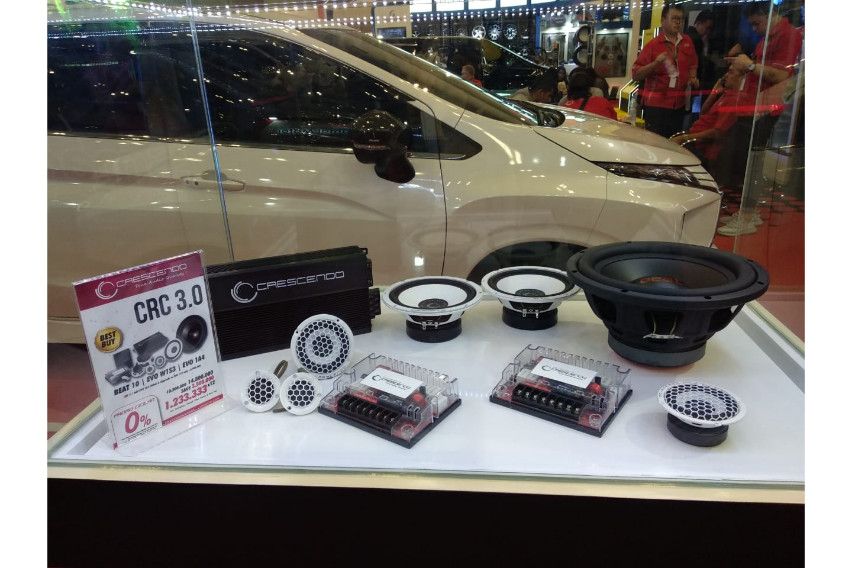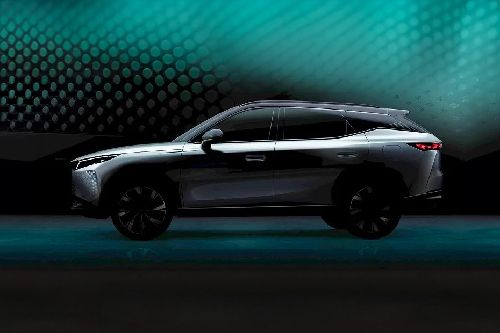Sound design: How to get the best audio setup for your car

Choosing between head units is already very hard, but if you add the cacophony from all the speaker choices in the market, the answer can be totally drowned out.
You can silence all of that noise and come up with a more sound starting point by first asking yourself, what do you want out of your vehicle’s audio system?
Are you picky and want the clearest and crispest sound a speaker system can deliver, or just want something that works and delivers a good enough output to hear lyrics and the melody? There are actually a lot more in between but for the purposes of finding a baseline, those two questions will do.
How much power for the cabin size?
Watch out for the power output, specifically the wattage, (e.g. 50 watts). Make sure that the number pertains to RMS (root mean square) instead of peak power. Yes, 50 watts seems like a lot but if it’s just peak power, that means you get the whole lot only in very short spurts. RMS, on the other hand, is a continuous and consistent output, which means you get 50 watts as long as the equipment is on.
Ensure as well that it’s 50 watts RMS per channel, which means that 50 watts go to each of the four or five channels (depending on the specs of the head unit or amp) and not divided between them.
On an average compact sedan, e.g. Vios, Altis, Civic, 50 watts RMS will sound good but for larger vehicles 77 watts RMS or better would be ideal.
If you want the audio to really pop, there’s no law against going for 100 or even 2,000+ watts RMS.
What’s your head unit?
If your head unit (that’s the infotainment system) is old, which means it doesn’t even have Bluetooth and USB connectivity, and a touchscreen display, you might want to go for an upgrade. If it’s fairly new and comes with the three basic features above, even if it is factory-installed, you may opt to keep it and put the extra money on better speakers.

OEM (original equipment manufacturer) head units or the ones that come with the vehicle usually have 10 watts RMS, which is considered a low-power system. Simplified, it means that the head unit sends 10 watts to each of the four speakers, which is the typical number of speakers in a regular sedan. In that scenario, you’ll need a speaker with high sensitivity ratings (anything over 93 dB), which is listed as SPL (sound pressure level) in the specs.
Leveling-up to a new head unit? Aside from updating to more tech, get more power as well with models that offer 16 watts RMS all the way to 2,000 and more. Obviously, you’ll have to pair this with speakers rated with low sensitivity, which is around 88-93 dB.
Do I need amplifiers?
If you’re an audiophile who needs to hear every single nuance of the song from an OEM head unit, definitely yes. But if you just want to listen to the song, the built-in amps of the OEM unit should be more than enough.
If you’re buying a new head unit, again, get the one with high RMS. This way, you can choose not to get amps because the output can singlehandedly power the speakers. But, if you want to maximize the power of your new head unit to get a really diverse and rich sound, or you’re installing additional speakers in the cabin, an amp would be necessary.
As to the kind of amplifiers, it really depends on the number of speakers you want to power (including a subwoofer, if any) and the specs of each.
To get the most out of the amp and the speaker, pair each speaker to one channel. You can start from a low 2- to a high 8-channel amp. As to the power, anything from 20 to 2,000+ watts RMS or higher, depending on the cabin size and your preference.
Planning to boost your sound with a subwoofer? There are mono or single-channel amps in the market that are specifically designed for subwoofer use. These even come with various audio tools to enhance bass sounds. This setup is preferred because subwoofers have a wide range of impedances that can literally fry 2- and 4-channels amps.
Speakers, baby!
The painless way to upgrade is to get replacement speakers. These come in all shapes and sizes (ones that can even match the factory mounts of your OEM speakers) and are simply plug and play. Just match the speakers’ capacity to the output of the head unit or amplifier, which means that if it’s delivering 50 watt RMS, each of your speakers should be rated as such.

Now there are two types of speakers, component and coaxial. The former has a better design because the tweeters are housed separately from the woofers and mids. As it is more complex, it will require individual drivers that are powered by a separate amplifier. A coaxial speaker has everything built into it, from the tweeter to the woofer.
Because of its complexity, component speakers reproduce much higher audio quality and detailed sound than coaxial but it also comes with higher acquisition costs and requires more cabin space for installation.
Invest in great front speakers, because that’s where majority of your sound (as the driver) will come from. If you’re buying four speakers, try to get both pairs (front and rear) from the same maker, and try to get the same model if possible, to prevent differences in tones between the pairs.
If you’re just like Meghan Trainor and are all about that bass, definitely install a subwoofer. It will increase the lifespan of all your speakers because they won’t strain at high volume and while reproducing a wide range of sounds. Plus, it just makes the overall sound so much more robust. For the least hassle, choose an enclosed sub so you don’t have to manufacture a box for it. The ideal placement should be in front but unless you drive a classic Beetle, the trunk is your next best option. You can opt for underseat subwoofers, they’re cheaper, takes up less space but are less customizable and doesn’t sound as good.
Sound check
Brand-new audio systems, especially speakers, takes some time to realize their maximum potential. Remember that the whole caboodle contains a lot of moving parts that were stationary prior to installation and first use.
At the start, these parts will be stiff but will loosen up and become more dynamic the more you use them.
To make sure it flexes through all the frequencies, play music with a wide dynamic range. Turn it up, but not at glass-shattering or ear-piercing level just yet. Play songs you’re familiar with so you can hear how the speakers get better as it gets more flexible over time.
I don’t care if you’re playing Led Zep’s "Whole Lotta Love" or "Hit Me Baby One More Time," just remember that after the break-in, play it loud and play it proud, baby!
Sell your car at the best price
 Verified and genuine buyers
Verified and genuine buyers
PIMS 2024
Trending & Fresh Updates
- Latest
- Popular
You might also be interested in
- News
- Featured Stories
Featured Cars
- Latest
- Upcoming
- Popular
Latest Car Videos on Zigwheels

Car Articles From Carmudi
- journal
- advice
- financing
- insurance















































































